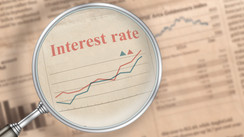Gold Prices Hold Steady Following a Rough Week
On Tuesday, gold prices maintained their level after having suffered a significant drop in the last week. The dollar, which had been on an upsurge, took a breather, and market observers are now keenly monitoring if gold would challenge a crucial support level.
The short-term prospect for gold remains overshadowed by persistent worries concerning extended high U.S. interest rates, particularly as markets factor in the possibility that the Federal Reserve might keep rates unchanged until June.
Sturdy U.S. economic data and a hawkish stance from Fed Chair Jerome Powell are key factors for this belief, provoking sharp drops in gold prices during the last two sessions.
The dollar surged to almost a three-month peak, while U.S. Treasury yields increased significantly due to prolonged high rates, further putting pressure on gold.
Spot gold remained at $2,026.33 an ounce, whereas gold futures for April saw no change, settling at $2,042.40 an ounce by 00:23 ET (05:23 GMT).
Spotlight on $2,000 Support as Anxiety Over Rates Mount
Several market analysts have suggested that the prices of spot gold are likely to challenge the $2,000 per ounce mark in the coming days, particularly if the U.S. interest rates outlook remains unchanged.
The CME Fedwatch tool indicated an 83% probability that the Fed will maintain rates in March, with an increasing number of bets for a similar move in May.
Despite gold minutely testing the $2,000 per ounce mark earlier in January, it just managed to avoid falling below the support level. Any dips below $2,000 could signal more significant losses in bullion rates, especially in light of high prolonged U.S. rates.
Next week’s U.S. inflation figures, expected to serve as a crucial turning point for prices, alongside speeches by several important Fed officials throughout this week, are likely to attract attention.
Higher rates in the U.S. for longer periods tend to hinder gold’s appeal by increasing the opportunity cost of investing in this yellow metal.
Copper Bounces Back as Traders Assess Impact of China's Economic Struggles
Amidst industrial metals, copper prices saw a rise on Tuesday after bearing losses for four consecutive sessions. Markets are now evaluating the impact of additional weak economic cues from China.
March expiring copper futures experienced a 0.5% increase, settling at $3.7920 a pound after losing over $1 in the previous four sessions.
The price drop is primarily attributed to a series of weak purchasing managers index readings from China, the biggest copper importer in the world. These readings displayed minimal recovery in business activity in January, particularly in the crucial manufacturing sector.
There is an ongoing focus this week on the Chinese inflation data for January, expected to be released on Thursday. The data release precedes the week-long Lunar New Year holiday.





